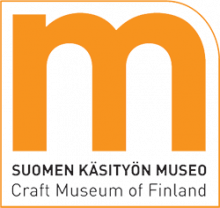Icons of Finnish Glass Art 6.5.–27.8.2023
After the Second World War, a new kind of collaboration between artists, designers and glassblowers began. Price regulations made it unprofitable for factories to produce utility glass. Glass factories had skilled workers and artists from other disciplines were available to work on the design of objects. These circumstances led to the design of high-quality art glass. The results of this collaboration continued the already started success in international exhibitions and triennials.
Success abroad created interest and enthusiasm for glass at home as well. The collaboration between skilled craftsmen and designers also produced high-quality designed utility items. They quickly spread into homes and the phenomenon has always been a kind of Finnish speciality internationally.
The exhibition presents a selection of some of the most iconic and beloved pieces of Finnish glass art and offers an overview of the diversity of Finnish glass art. It includes both serial production and art glass. This exhibition also highlights possible artists and iconic objects from this period that will remain in our collective memory.
Why some objects become iconic is a fascinating question. They may be the result of clever marketing, or they may respond to an aesthetic, functional or wider societal need. Aesthetic ideals change over time. Over the decades, art has become more diverse and the boundaries between the different art forms are not clear. Even glass as a material evolves with the times.
The production of glassware always requires the collaboration of the glassblower and the designer. The desired shape of the object is sought together, trusting each other. A glassblower is a craftsman whose skills are the result of decades of work. The exhibition includes objects that have required exceptional craftsmanship to create.
Glassblowers played and still play a crucial role in the creation of these objects. They include, among others Hugo Rask, Helge Nieminen, Reino Löflund and Heikki Punkari at Iittala, Olavi Helander, Olavi Nurminen, Jaakko Niemi and Unto Suominen at Nuutajärvi, Nikolai Terhomaa, Vilho Lehtonen and Martti Virtanen at Riihimäen Lasi Oy. Today, in addition to the Iittala glass factory, skilled glassblowers and other professionals work in smaller glass studios. In addition to glassblowers, there is a need for mould makers, cutters and engravers, for example.
The following artists are included in the exhibition: Alvar Aalto, Tamara Aladin, Arni Aromaa, Kaj Franck, Klaus Haapaniemi, Göran Hongell, Saara Hopea, Matias Karsikas, Matti Klenell, Joonas Laakso, Kerttu Nurminen, Katriina Nuutinen, Gunnel Nyman, Aimo Okkolin, Heikki Orvola, Anu Penttinen, Paula Pääkkönen, Helmi Remes, Markku Salo, Timo Sarpaneva, Sauli Suomela, Inga Sempé, Nanny Still, Tommi Toija, Oiva Toikka, Kati Tuominen-Niittylä, Helena Tynell, Aada Vainio and Tapio Wirkkala.
The exhibition is produced by the Finnish Glass Museum.
Icons of Finnish Glass Art
Exhibition in the Craft Museum of Finland 6.5.–27.8.2023.
Museu is open Tue-Sun 11-18. Exceptions on holidays.
More information
Mikko Oikari, senior curator, Craft Museum of Finland
tl. +358 50 553 3880, mikko.oikari [a] jyvaskyla.fi

